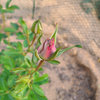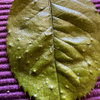Phoenix Hardenbergia is Crispy and Dessication is Setting inHelp
liebling
15 years ago
More Discussions
Dear Folks,
We planted three of these vines against our walls in March. Bought them from Moon Valley and were told that they did "great against any wall" and that "reflected heat was no problem."
Well, the two that get all day sun are suddenly, and I mean suddenly in the past week, quickly becoming crispy and look dessicated. They were doing very well up until then. There has been no change in watering (on a slow drip every other day) and nothing added to the soil.
We are very upset about this sudden turn and all we can think of is that its the intense heat days that have been hitting us for a month now and that the plants simply are giving up. We upped the water, but that isn't it.
My husband feels we should shroud the plants completely in shade cloth, but I don't know if this solves the problem (lack of sun could kill them too) in any long-term way.
Are they simply in the wrong location to make it through our summers here in Phoenix? The only one that's hanging in there (though not growing like the others were in the sun until those started to crisp up) is the one that gets less sun.
Please, any thoughts are welcome. I am calling another nursery, summer winds, tomorrow to see if they can offer some suggestions. They are big, expensive vines that were a bear to plant.
Thank you SO much in advance.
Liebling


Haname
lieblingOriginal Author
Related Professionals
Oconomowoc Landscape Architects & Landscape Designers · Mount Wilson Landscape Architects & Landscape Designers · Buford Landscape Contractors · Goodyear Landscape Contractors · McKinney Landscape Contractors · Bowie Landscape Contractors · Chelmsford Landscape Contractors · Pikesville Landscape Contractors · Riverhead Landscape Contractors · Snoqualmie Landscape Contractors · South Lyon Landscape Contractors · View Park-Windsor Hills Landscape Contractors · Birmingham Carpenters · Fair Oaks Carpenters · San Marcos Carpentersaztreelvr
lieblingOriginal Author
lieblingOriginal Author
aztreelvr
lieblingOriginal Author